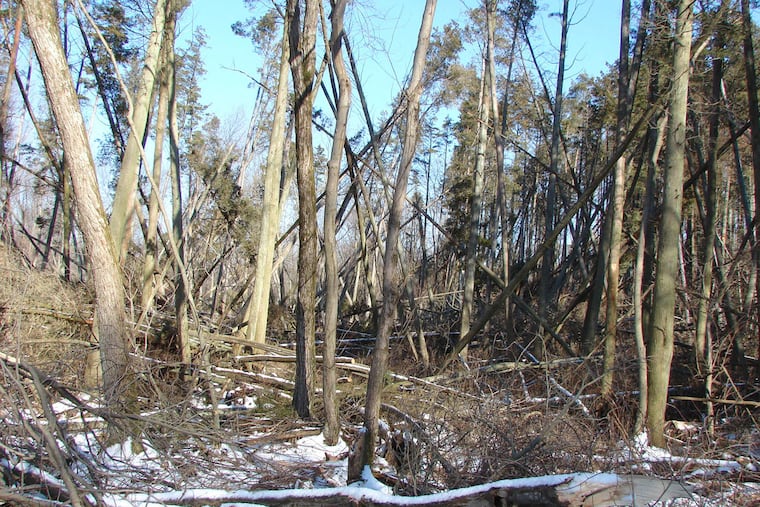Commentary: Help save Jersey's Atlantic white cedars
By Bob Williams Anyone who visits an Atlantic white cedar forest in South Jersey would agree these are special forests and we need to conserve and protect them. They are wetland forests and provide critical environmental services to society.

By Bob Williams
Anyone who visits an Atlantic white cedar forest in South Jersey would agree these are special forests and we need to conserve and protect them. They are wetland forests and provide critical environmental services to society.
This forest has been categorized as "globally threatened" or "critically imperiled" by several environmental groups. Sounds serious enough, but what are we doing to help or conserve this resource?
About 20 years ago, state government brought together interested stake holders to develop the Best Management Practices Manual for Atlantic white cedar. This, along with the years of cedar research done by George Zimmermann of Stockton University, was intended to begin an initiative that would end centuries of decline and begin the restoration of this important forest ecosystem. However, that effort quickly waned as a result of bureaucratic bickering over how to manage public land.
Local, county, state, and federal governments, along with nonprofits, continue to "preserve lands" but have done little to nothing to provide for the critically needed management of the cedar forest resources. This ecosystem remains in rapid decline from annual events such as tornadoes, wind throw, hardwood and brush encroachment, uncontrolled wildfire, beaver flooding, and most recently, root rot diseases.
The remaining small fragmented remnants of cedar forests no longer are able to respond with regeneration from these disturbance events. Super Storm Sandy destroyed several thousand acres of this forest, and there has been no effort to restore these storm-damaged stands of cedar along our coasts. We also see the continued loss of the coastal cedar stands as sea water continues to rise.
One only needs to drive around South Jersey to readily see the falling down, declining cedar stands. There is a forest dying in plain sight, and no one seems to even care. How can that be in this age of environmentalism?
If government and people cared as they claim, we could do something. We now have more than 85 years of excellent scientific research that can guide us to apply the management activities that would stop the centuries of decline as well as begin to provide for a net gain of cedar ecosystems annually.
So-called conservation efforts that only result in the purchase of land for the purposes of "preservation" have failed. We need to start providing for the regeneration of cedar forests with well-designed management plans and actions.
The decades of benign neglect have consequences. Those who oppose the active management of this forest resource will have to be held accountable. They will have to explain to future generations why we have allowed this loss to happen when we knew better.
If we can spend billions of dollars to buy public land, surely we can spend a few dollars to steward and care for these forest resources. On private lands, we now have many successfully restored young cedar stands that would not be there if we had not intervened. These young forests can serve as inspiration for others to care for this forest on a landscape level. How ironic that government buys most land to protect it from what it considers greedy, exploitive private land owners, yet it is they who have shown by their actions that they care more about the white cedar forests than public ownership entities.
It was Benjamin Franklin who first raised concerns about the loss of the Atlantic white cedar forests in the mid-1700s. He knew what he was talking about. With only 10 percent of the original forest left across its entire range along the Atlantic seaboard, will our modern-day political social structure step up and support the management and expansion of the remaining white cedar patches?
Next time you visit Independence Hall in historic Philadelphia, look up at the Atlantic white cedar shingle roof, and think about the forest that has sheltered that magnificent building for hundreds of years.
And when you're finished thinking, get up and do something to help the forest that has given up so much. Make a difference.
Bob Williams is a certified forester at Pine Creek Forestry. bob@pinecreekforestry.com